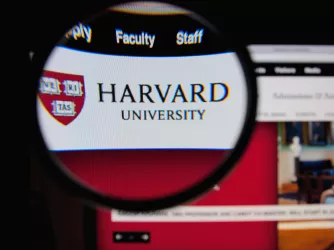Table of Contents
Leadership roundup: How college leaders are answering questions about free speech

Controversy around free speech on college campuses seems to only be escalating: Charles Murray’s disastrous visit to Middlebury College, the violent response to Milo Yiannopoulos’ visit to the University of California, Berkeley, the shutting down of Heather Mac Donald’s Claremont McKenna College event, and just last week, Berkeley’s attempt to shut down Ann Coulter’s visit to the birthplace of the free speech movement, which has already prompted a lawsuit.
After a free speech controversy engulfs a college community, campus leaders are often left with questions from students, faculty, alumni, and the press about where the school stands on the issues. The most high-profile cases have drawn increased national attention to the campus free speech debate in recent months, but plenty of other colleges are dealing with free speech issues of their own.
Here, we review statements from college administrators that you might have missed.
University of Minnesota
After a string of vandalism targeted political murals from both Republican and Islamic student groups, University of Minnesota president Eric Kaler spoke out against the chilling effect that often follows censorship:
There … seems to be a new standard that political speech or posters that express a different point of view from our own are de facto hate speech, or somehow shouldn’t be allowed. It’s a standard that says if anyone is offended, then those words are not permitted.
Those aren’t the values of this nation or this University. … We absolutely cannot condone a chilling of conversation.
Kaler’s response came after a mural created by the Muslim Students Association at the University of Minnesota was vandalized in October. The word “ISIS” was spray painted over a panel of the university’s pedestrian bridge advertising the Muslim Student Association.
The university’s College Republicans faced similar vandalism when their “Build The Wall” mural was painted over that same month.
Indiana University
Charles Murray’s speech earlier this month at Indiana University prompted provost Lauren Robel to pen a subsequent essay about the event in the student newspaper:
Murray’s talk wasn’t hate speech. It was an argument about social class and politics. There are many ways an academic institution, especially a state institution of higher education which is bound by the First Amendment, can react to controversial speech. We can do what IU’s Political and Civic Engagement Program did: teach and discuss. Or do what the scholars who scrutinized The Bell Curve’s social science did: interrogate the reasoning, or the evidence, undergirding the claims, and disprove them if they are wrong.
Or protest peacefully. The First Amendment also protects that, and people who disagree with Murray were out in force during Murray’s talk. IU took strong steps to ensure both that the talk could continue, and its audience could engage with Murray in the question-and-answer period that followed, and that peaceful protesters could express their views. By doing so, we avoided the level of violence, injury, and heckler’s veto that accompanied Murray’s talk at Middlebury College, and which have been roundly condemned by scholars of every political persuasion and every major news outlet.
A far cry from the events at Middlebury, Murray’s visit to Indiana was largely peaceful, albeit with heavy security.
Washington State University
After an anti-abortion display was vandalized on Washington State University’s campus, President Kirk Schulz issued the following statement:
As we noted in the fall, protecting the free exchange of ideas while encouraging dialogue that is constructive, respectful, and civil is one of the University’s core values.
Public universities are uniquely suited to be laboratories for free speech, a place where we can practice the skills needed in civic engagement. WSU creates space for ideas to be expressed, explored, considered, examined, critiqued, and supported. And the University also creates space for people to be treated with respect and dignity, encouraged to thrive and to learn in community.
The incident occurred when an anti-abortion display of pink crucifixes along with signs opposing abortion were placed on the campus lawn at WSU. In a video, a WSU student is seen tearing down a sign and uprooting the crucifixes.
Georgetown University
Georgetown University president John J. DeGioia sat down with the editor-in-chief of The Georgetown Voice last week to discuss free speech rights:
[O]ur policies on speech and expression were crafted in the late-1980’s. They’ve guided the community; they’ve gone through revisions over the years. We do not limit speech, either on the content of the view or the person expressing the view. It’s subject to reasonable time, place, and manner restrictions, which is the spirit of the First Amendment. This has guided us for nearly 30 years, and we’ve had a speech and expression oversight committee that has helped monitor this over the course of these 30 years. We do not limit speech, either on the content of the view or the person expressing the view.
While DeGioia says Georgetown does not limit speech on content or by person expressing the view, Georgetown’s past actions paint a different picture. Georgetown administrators cannot simultaneously censor groups like H*yas For Choice and tout their commitment to free speech rights of their students. Georgetown also maintains a “red light” rating in our Spotlight Speech Codes Database and made this year’s (and last year’s) list of the 10 worst colleges for free speech. While DeGioia’s supportive comments are certainly welcome, Georgetown’s policies and practices need to follow suit.
Franklin & Marshall College
Franklin & Marshall president Daniel Porterfield lamented to Inside Higher Ed last month about the way college students’ response to free speech is portrayed in the media. He gave the interview in response to Danish editor Flemming Rose’s visit to F&M’s campus:
There have been a number of social critics — in and outside of the academy — who have labeled an entire generation of students as illiberal crybullies. If you work at a college campus, you know that these sweeping denunciations are not accurate. Many students in the last two years have protested speech that they felt was offensive to them in a pro-speech manner, but you don’t read a lot of descriptions of the media about pro-speech protest.
“There is no shortcut to regularly sustained dialogue on campus,” Porterfield added.
I previously wrote about F&M students’ commendable response to having Rose speak on campus, especially in contrast to Charles Murray’s Middlebury visit.
Porterfield’s administration, commendably, has also shown a willingness to stand behind the ideals of free speech on campus by adopting a statement on free expression inspired by the University of Chicago’s influential statement.
West Virginia University
West Virginia University president E. Gordon Gee touched on the topic of free speech at WVU in his 2017 State of the University Address:
The 21st century demands leaders who, despite glaring differences of opinion, have respect for the views of their peers. People who are able to think, to reason, and to debate are the ultimate antidote to incivility and intolerance.
It is our charge to teach students how to debate civilly, protest peacefully and learn from people whose opinions and choices differ from their own.
Any attempt to deny free speech protections to others is a threat to our own freedom. It is a threat to education. And it is a threat to democracy itself.
While Gee’s words are inspirational, WVU still maintains a yellow light rating from FIRE for several policies that threaten students’ free speech rights.
If Gee is serious about protecting free speech on campus, he should ensure WVU eliminates all of its speech codes in order to fully grant its students and faculty the First Amendment rights to which they are entitled. This is a process with which FIRE would be happy to help.
FIRE is always happy when college administrators want to express support for free speech on campus. But when it comes to protecting the rights of students on campus, actions speak louder than words.
As campus controversies continue, we’ll keep you updated on how college administrators are responding to free speech issues.
- Litigation
- Student Rights
- Press Freedom
- Heckler’s Veto
- Faculty Rights
- Free Speech
- Speech Codes
- College Governance
- University of Minnesota
- Indiana University - Bloomington
- Washington State University
- Georgetown University
- Franklin & Marshall College
- West Virginia University
- FIRE Launches Campaign in Support of University of Chicago Free Speech Statement
Recent Articles
FIRE’s award-winning Newsdesk covers the free speech news you need to stay informed.

‘I hate freedom of opinion’ meme leads to sentencing in German court

Revoking Harvard’s tax-exempt status will threaten all nonprofits

Grandpa’s advice for the new wave of American censors
